Native pollinators are animals from North America that pollinate crops and many other plants. Pollination is necessary for seed production in many plants. Pollinators include mason bees, carpenter bees, bumblebees, sweat bees, wasps, hover flies, butterflies, hummingbirds, and many more. Most of the focus on pollinators revolves around honey bees, which are native to Europe, Africa, and the Middle East, but not North America, but native bees are very important pollinators. Many native bees are solitary—an individual bee lives alone, rather than nesting in colonies or hives as honey bees do. Also, if left undisturbed, native bees will not sting.

Photo: Bodie Pennisi, University of Georgia

Photo: Josh Fuder, University of Georgia
Planting pollinator-friendly flowers in your yard is a great first step for improving the quality of pollinator habitats. Adding nesting sites and nesting materials is another important measure in creating sustainable habitats, especially for native bees. Many native bees lay their eggs in aboveground cavities. They make nests in abandoned beetle tunnels in dead logs, hollow stems, and similar locations. Unfortunately, dead wood and debris that would be useful for nesting is often quickly removed from yards. While flowers may be present, the bees are left with few locations and materials for laying their eggs.
Urbanization is a direct cause of pollinator declines (Hennig and Ghazoul 2012). Neighborhoods have developed in areas that were once forests and other natural habitats. Natural landscapes have both the floral and nesting resources needed for native bees, but in most landscaped yards, the grass is mowed short, flowering “weeds” are killed with herbicides, many landscape bushes do not bloom, and debris is quickly removed to maintain a neat and manicured appearance.
If you want to help pollinators while maintaining a neat yard, there is good news. Many of the resources that pollinators need, including nesting locations, can be attractive additions to your landscape. In Europe, nesting boxes can host over 15% of native bee species (Fortel et al. 2016). When bees have access to a diversity of nesting materials, their numbers are positively affected, so providing nesting resources in your landscape is very beneficial to bees (Potts et al. 2003).
Bees can use different nesting substrates. Aboveground nesting bees use materials like hollow twigs, dead wood, and paper-based bee tubes. These materials can all be incorporated into nesting boxes, or “bee hotels.” Nesting box design can be as simple as several paper-based bee tubes secured into a bundle or one piece of untreated lumber with holes drilled into the surface. Designs can also be creative, using a multilayered structure with numerous types of nesting materials. Creating a variety of cavity sizes will attract different types of pollinators based on their body sizes. The sides of the nesting box that do not contain holes can even be painted to add an attractive splash of color to your yard. Making nesting boxes can be a fun activity for the whole family.


Photo: Becky Griffin, University of Georgia
Building a bee hotel







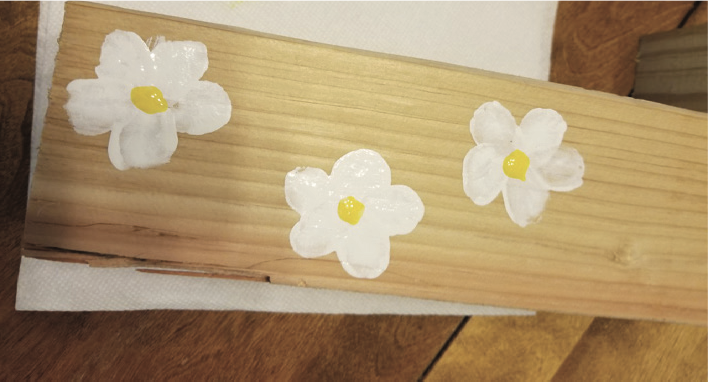

Installing a Bee Hotel
Place bee nesting boxes in the yard during early spring so that they will be available for the first bees of the season to lay eggs. February should be appropriate for most places. Be sure that the boxes are installed at least 3 feet above the ground in a location protected from wind and rain. It is best to install the nesting boxes facing south. Secure the top and bottom of the boxes to a surface like a tree or a fence. If the bottom of the box is not secured, it will blow around in the wind. Place multiple nesting boxes throughout your yard to give bees plenty of nesting locations. The bees that use nesting boxes have one generation each year, so do not remove the nesting boxes during the winter. Leave them out and bees will exit the holes in the spring.

Nesting boxes require some maintenance. Pollinators have pesky pathogens and parasites that harm them. Once a box has been in use for a couple of years, the wood will begin to degrade and the pathogens and parasites that find the box can become a problem. Depending on your design, plan to replace nesting boxes or the wood bolts in the boxes every two years.
Once your nesting boxes are installed, it is time to relax and enjoy your pollinator visitors. Keep your eyes open for leafcutter bees and mason bees that will use the holes that you drilled in the wood. Carpenter bees may show up as well, but they will drill their own holes into the wood nesting boxes.
Leafcutter bees
(family: Megachilidae, Megachile spp.) —
Females emerge in the spring and summer and begin making their nests. A single egg is laid in each cell, or hole, in the nest. The female stocks the hole with pieces of leaves and pollen to feed developing larvae. The larva is nearly finished developing in the fall and will overwinter as a mature larva. The next spring, leafcutter bees emerge as adults and begin looking for new nesting sites.
Leafcutter bees are about 0.25 to 0.5 inches long and have black bodies with light or dark hairs. They carry pollen on hairs on the underside of their abdomen. Leafcutter bees have large mouthparts to cut the leaves, but they generally do not bite or sting unless disturbed.
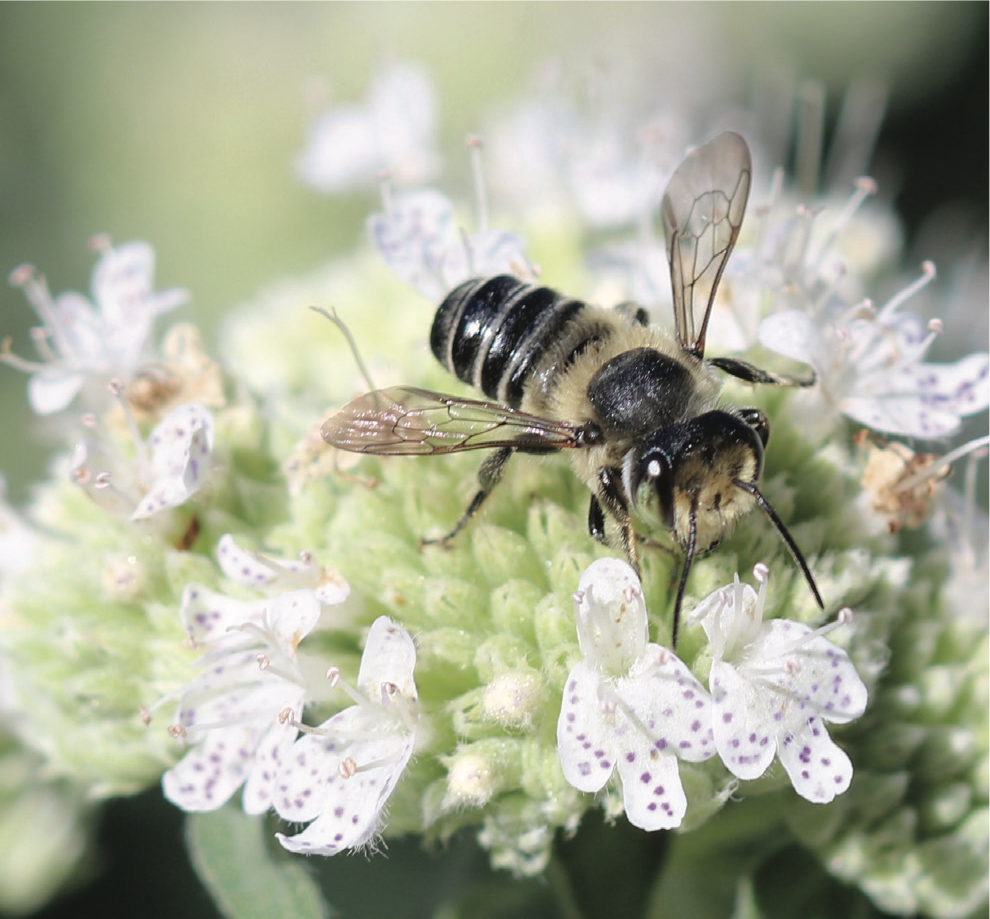
Photo: Bodie Pennisi, University of Georgia
Mason bees
(family: Megachilidae, Osmia spp.) —
Mason bees received their name because they often use mud during nest construction. In the spring, male mason bees emerge first and wait for females to emerge so that they can mate. Shortly after mating, the males die. Females search for an appropriate nesting site and begin preparing the nest. A cavity or hole will have multiple cells, each of which has a single egg. The cells, between four and 10, are stocked with pollen and nectar to feed each larva once it hatches. The female divides the cells in the cavity with plugs of mud. Unfertilized male eggs are laid toward the front of the cavity, and fertilized female eggs are laid toward the back of the cavity. A female may produce approximately five nests, and larvae develop during the year. About a month after hatching, the larva has eaten its food and begins to spin a cocoon to continue development. Adults emerge the next spring.
Mason bees are about 0.25 to 0.5 inches long. Some have dark bodies covered with pale hairs, while others are a metallic greenish-blue with less hair.
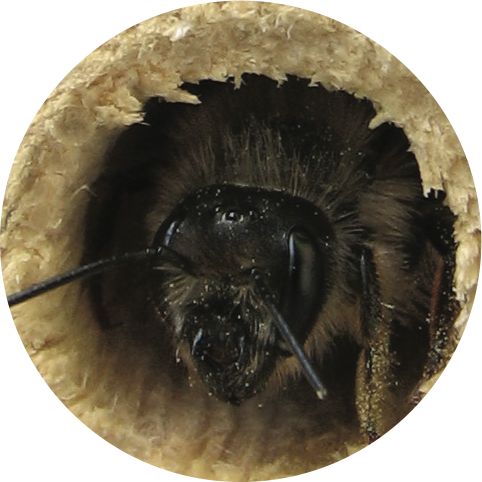
Photo: Ted Kropiewnicki
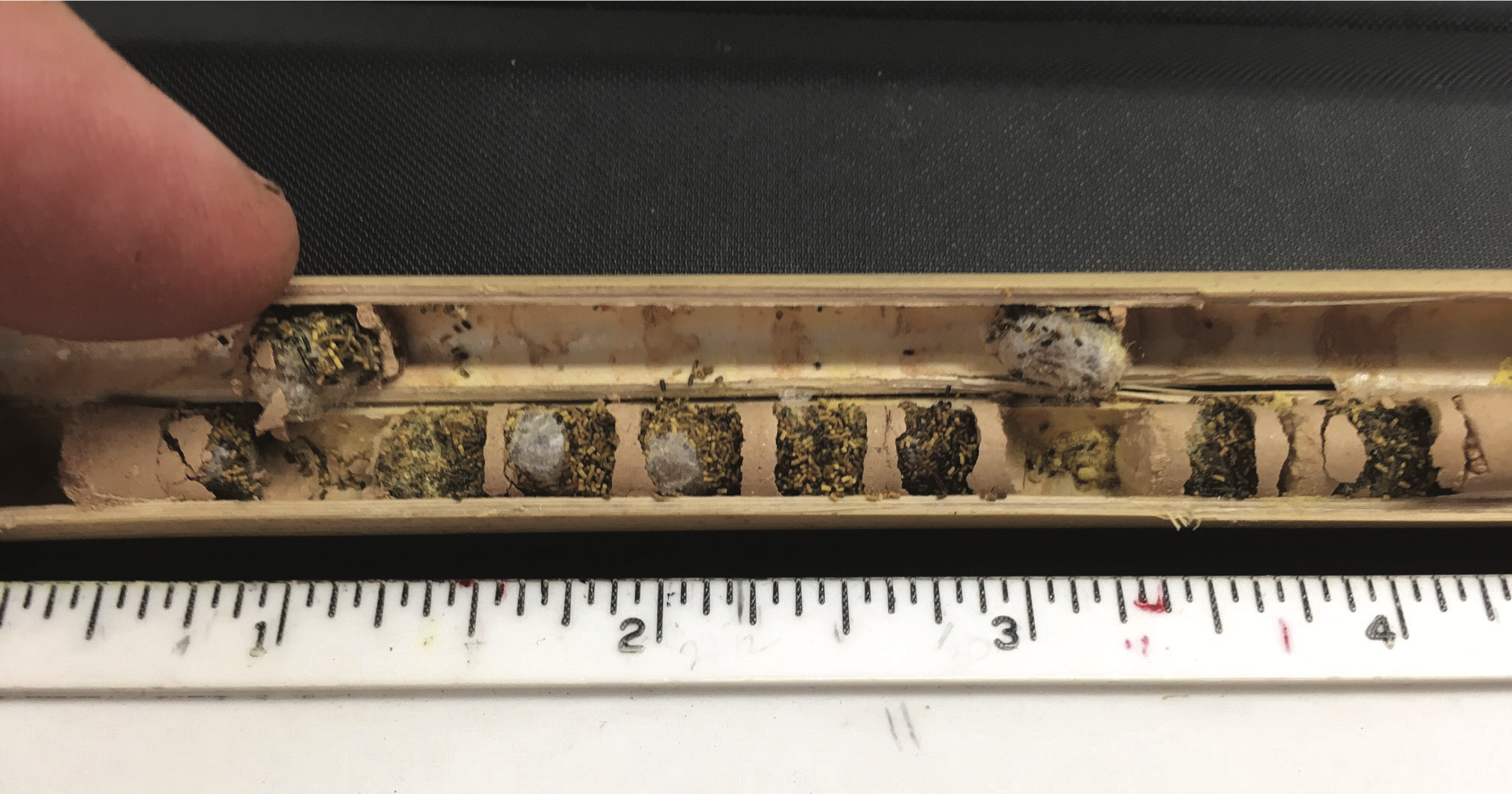
Photo: Josh Fuder, University of Georgia
Large carpenter bees
(family: Apidae, Xylocopa spp.) —
Homeowners often consider large carpenter bees to be pests because they bore holes in the wood in siding, decks, and fences. Carpenter bees emerge later in the spring, and a female will begin to dig her tunnel once she has mated. Cells are stocked with pollen and nectar to feed developing larvae and wood chips are used to separate cells. Each cavity has about six to eight cells. Larvae finish development during the late summer. Adults emerge and then hibernate, usually in abandoned nesting sites, until the next year. Large carpenter bees will not use holes that are drilled into a nesting box, but they may use the nesting box to bore their own holes.
Large carpenter bees have a black body with either light or dark hairs. The back legs have special hairs for carrying pollen. They are relatively large bees, 0.75 inches long or larger. Large carpenter bees are often mistaken for bumblebees because they are similar in size and appearance. They can be easily identified, however. Bumblebees have a hairy abdomen, while large carpenter bees have a glossy abdomen.
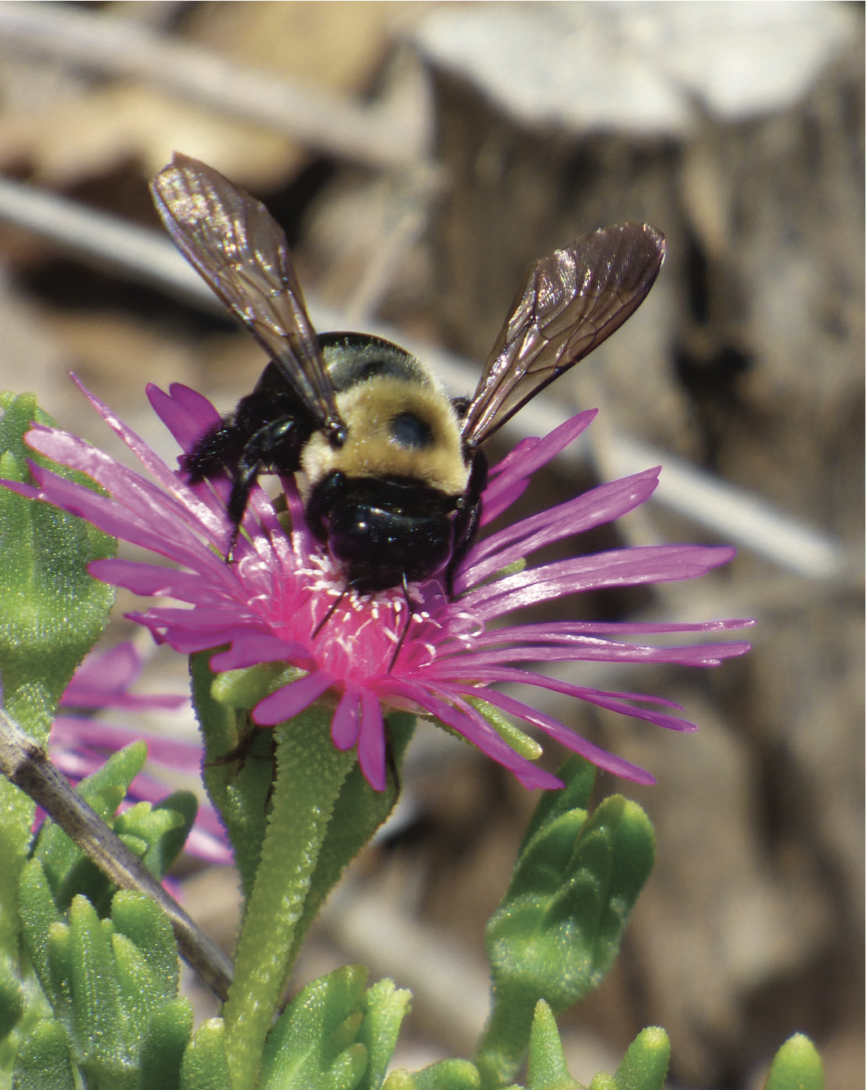
Photo: Bodie Pennisi, University of Georgia
Small carpenter bees
(family: Apidae, Ceratina spp.) —
Small carpenter bees are metallic blue to green in color and typically nest in plant stems, but they may also use nesting boxes to lay their eggs.
To ensure that your lawn is also attractive to ground-nesting bees, leave a few dry, sandy areas of lawn, bare of vegetation so that these pollinators have a place to construct their nests.
You can also help to create a pollinator-friendly landscape by planting pollinator-friendly trees, providing lots of flowers, and setting up birdbaths or shallow dishes of freshwater.
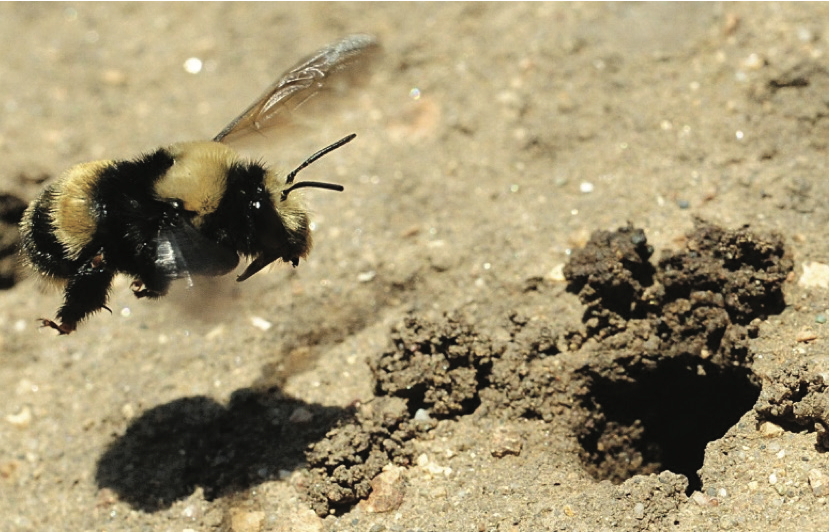
Photo: Kathy Keatley Garvey, UC Davis
References
Fortel, L., Henry, M., Guilbaud, L., Mouret, H., & Vaissiere, B. (2016). Use of human-made nesting structures by wild bees in an urban environment. Journal of Insect Conservation, 20, 239–253. https://doi.org/10.1007/s10841-016-9857-y
Hennig, E. I., & Ghazoul, J. (2012). Pollinating animals in the urban environment. Urban Ecosystems, 15(1), 149–166. https://doi.org/10.1007/s11252-011-0202-7
Potts, S. G., Vulliamy, B., Dafni, A., Ne’eman, G., & Wilmer, P. (2003). Linking bees and flowers: How do floral communities structure pollinator communities? Ecology, 84(10), 2628–2642. https://doi.org/10.1890/02-0136
Status and Revision History
Published on Jan 05, 2018
Published with Full Review on Jul 13, 2022


























































